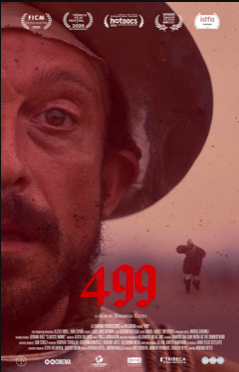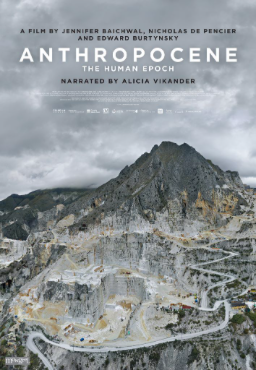The first third (several hundred pages) of the final installment of Karl Ove Knausgaard’s monumental My Struggle is more or less what we have come to expect by this point: an account of a couple of days in the narrator’s life. Specifically, we are more or less in the “present”: Karl Ove is installed in Malmö, Sweden, with his (second) wife and their three young children, though for much of the short period described, the wife is away and his friend and confidant, Geir, comes to visit. Nothing very dramatic happens, and in lieu of any grand events the minutiae of daily routines are recounted in intense detail. A representative sample: “I filled a bowl with cornflakes and put it in front of Heidi along with a carton of milk, went out onto the balcony to get the vacuum jug, filled it with coffee, took a cup from the cupboard, poured myself the few mouthfuls that wouldn’t fit into the jug and went out onto the balcony again” (126). And so on, almost ad infinitum.
At one point the narrative, such as it is, truly devolves into a list, as Knausgaard describes Malmö’s urban environment: “Hotels with flags flapping at their entrances, sports shops, clothes shops, shoe shops, electrical dealers, furniture shops, lamp shops, carpet shops, eyewear shops, bookshops, computer shops, auction houses, kitchenwear dealers” (306) and on and on and on. All this is what Fredric Jameson, in his review of the book, calls “itemisation”: “we have abandoned the quest for new languages to describe the stream of the self-same or new psychologies to diagnose its distressingly unoriginal reactions and psychic events. All that is left is to itemise them, to list the items that come by.” Jameson is rather scornful of this style, if style is what it is: “these pages do not quite enliven the palate.” But he makes a mistake, I think, in suggesting that what happens next, from around page 400, is merely a further instance of such itemisation.
What “happens” is still not exactly an event, but instead a long digression into literary and cultural theory and history, specifically a rambling reading of a poem by Paul Celan followed by a discussion of Nazism with a focus (if focus is the right word) on the book from which Knausgaard’s own series derives its title: Mein Kampf. Previous volumes have also included such digressions into what Jameson (still scornful) calls “a kind of banal philosophical psychologising,” but never at such length. And the key point here is less what Knausgaard says about either Celan or Hitler (some parts of which are interesting, other parts undoubtedly less so), or the other authors that he touches on along the way–Kafka, Joyce, Klemperer, Levinas–than what such reflections say about the former or genre of the book, and implicitly the series as a whole.
For during much of the first part of the book, while Karl Ove is making breakfast for his kids or shopping for dinner or chatting to his friend, everything is overlaid with an anxiety about the response provoked by the first volume of My Struggle, and implicitly also about the reception of this final volume, too. Book One dealt largely with the aftermath of the death of the narrator’s father, who is portrayed as having sunk into a squalid alcoholism in his final days; what is itemised there, among other things, are the immense quantities of cleaning products required to sanitize the house in which he died, shared with his aged mother (Karl Ove’s grandmother), who likewise is presented as someone who has lost all shame about the state of her immediate surroundings. It’s a harrowing depiction of downfall and demise, as the narrator struggles to come to terms with his father’s impact on him (one of the series’s central preoccupations) as well as his own ambivalence towards drinking (for he, too, is often at least a borderline alcoholic). But as this first installment is about to be published, his uncle–that is, his father’s brother–protests that this account is essentially libel: in effect, that Knausgaard is making things up, in order to tarnish his father’s good name. The uncle writes to the book’s publishers, threatening to sue if Karl Ove persists in this malicious denigration of his own family. So in the midst of the regular routines that comprises the bulk of the first few hundred pages of this final installment of the saga, the narrator is continually checking his email, dreading that his uncle may have written him yet another poison pen letter, and fearing for the consequences if this scandal becomes public.
In the meantime, both to himself and to his friend, Knausgaard seeks to justify what he has done–and, again implicitly, what he is still doing as he writes this last volume of the series. In the first instance, he worries that his memory is indeed faulty. This too is a constant theme throughout My Struggle: perhaps improbably, this author of 3,600 pages of excruciatingly detailed memoir repeatedly tells us that he has a problem remembering. From Book One (A Death in the Family): “I remembered hardly anything from my childhood” (171); “My memory was nothing to brag about” (304); “I usually forgot almost everything people, however close they were, said to me” (387). And later books tell us that, once he starts drinking, at least in his youth, Knausgaard would habitually get so drunk that he would black out and wake up in the morning with no recollection of what he had done the previous night. Indeed, if anything structures the entire grandiose project (and this is further proof in favor of Jameson’s argument that Knausgaard’s enterprise is nothing like Proust’s) it is not so much memory as amnesia. Karl Ove is consistently asking himself “What did I do?” and if anything the overly detailed itemization is like the painstaking attempt to reconstruct a past that he can at best only fitfully recall. Now, however, his uncle’s angry rebuttals challenge the validity of all that careful work. Perhaps, after all, he had got it all wrong? “Had I really been unreliable in everything I had written” (The End 163).
(It is perhaps the fact that the books’ anxiety always revolves around what its narrator has done that also makes them so oddly generic: Knausgaard is never too concerned about identity, about who he is; in fact, he is always ready to erase himself, as with the two occasions in which he slashes his face, literally defaces himself. As such, readers do not have to identify with Knausgaard, merely with his predicament of asking “How did I get here?” “What did I do?”)
At this point, then, while insisting on the fundamental truth of his account, Knausgaard falls back on the notion that what he has been writing is less memoir than novel, even if “the whole point is it’s meant to be true” (257).
Hence the strangeness of the long digression that soon takes over much of the book. For though in large part Knausgaard’s reading of Celan, for instance, is concerned with issues of truth and language, this excursus can hardly claim to be “true” in any conventional sense, even as it certainly also seems to break any novelistic form. If anything, this is the point at which My Struggle most obviously escapes the orbit of literature entirely, to become instead perhaps an anti-novel. It is as though the uncle’s objections had derailed the narrative entirely, shaky and tenuous as it was at best in that lists and the accumulation of detail substituted for plot, digression and association for any sense of causality or consequence. Here Knausgaard gives in to digression as the only possible organizing structure for what has now become an endless stream of words tied only tenuously to memory, place, or incident. Though there are still hundreds of pages to go before the volume concludes (with a famous final paragraph that locates itself fully and immanently in the present of the writing process: “Now it is 07.07 and the novel is finally finished” [1153]), midway it appears that the book is already flirting with what its title announces as “the end.”




